The Best in Aviation, From the Leonardo AW09 Helicopter to Dassault 6x
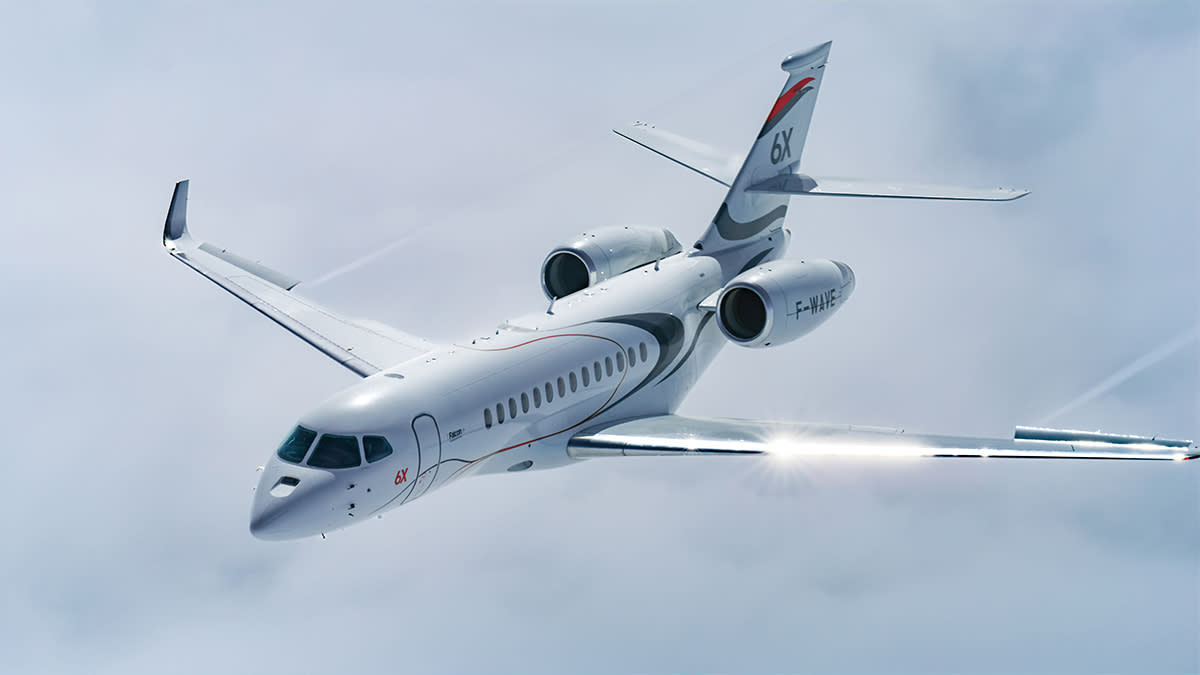
The Big Idea: Next-Gen Piloting Is Here
The fast-approaching era of electric aircraft will transform intracity and regional travel for passengers, but it will also fundamentally change the pilot experience. The new crop of electric vertical takeoff and landing (eVTOL) craft are smaller than most helicopters and conventional planes, but also potentially more complex, with multiple rotors that tilt for hovering and forward motion. That’s supplemented by the need to constantly assess flight conditions in what promise to be busy urban airways, all while managing prop and rotor pitch and adjusting ailerons, rudders, elevators, and landing gear.
How does one lessen the pilot’s burden without compromising safety? The answer, eVTOL leaders Archer and Joby agree, involves unified flight controls, adopted from military programs such as the F-35B fighter jet. The fly-by-wire systems used by Dassault, Gulfstream, and Bombardier operate on the same principle, with a flight control computer (FCC) linked to a multi-servo digital autopilot. Unlike mechanical systems of older aircraft, where a pilot controls every aspect of flight, here the computer takes over once the pilot inputs commands.
More from Robb Report
How Heirloom Grains Are Bringing Unique New Flavors to Whiskey
Editor's Letter: Inside Robb Report's 36th Annual Best of the Best Issue
The Food World Is Getting Over Its Obsession With 'Authenticity'
The next generation of unified flight controls are significantly faster, smaller, and more sophisticated. BAE Systems has designed controls that relay pilot input every few milliseconds but are 40 percent more compact than five years ago. This customized technology is designed to be intuitive for fixed-wing or rotorcraft pilots and far more simplified.
Joby’s inceptor, or the stick that controls speed, for example, re-centers after an input, maintaining the airspeed set by the pilot—similar to cruise control in a car. “If I want to go to 100 knots, I’ll kind of peg the stick,” says Joby’s Greg Bowles. “The number reaches 100, you let go, and it’s going to stay at 100. If you continue to accelerate, it’ll get to a maximum safe top speed and stop.”
“The pilot doesn’t control power,” adds Archer’s Brian Gump. “The pilot commands acceleration or deceleration, a climb or descent, or a heading change, and the FCCs allocate power as required to meet that command.” Archer’s controls include two sticks: The left regulates velocity while the right handles vertical speed and direction.
These advances signal a new chapter for not only the eVTOL world, but also how pilots train. Flight is not so automated that the aviator is entirely removed from the equation—the pilot still dictates the direction and navigation of the aircraft’s path—but it is a fundamentally new way of flying. Not exactly a magic carpet, but closer than aviation has ever been before.
Sign up for Robb Report's Newsletter. For the latest news, follow us on Facebook, Twitter, and Instagram.
Click here to read the full article.
Light Jet: Textron Aviation Citation CJ3 Gen2
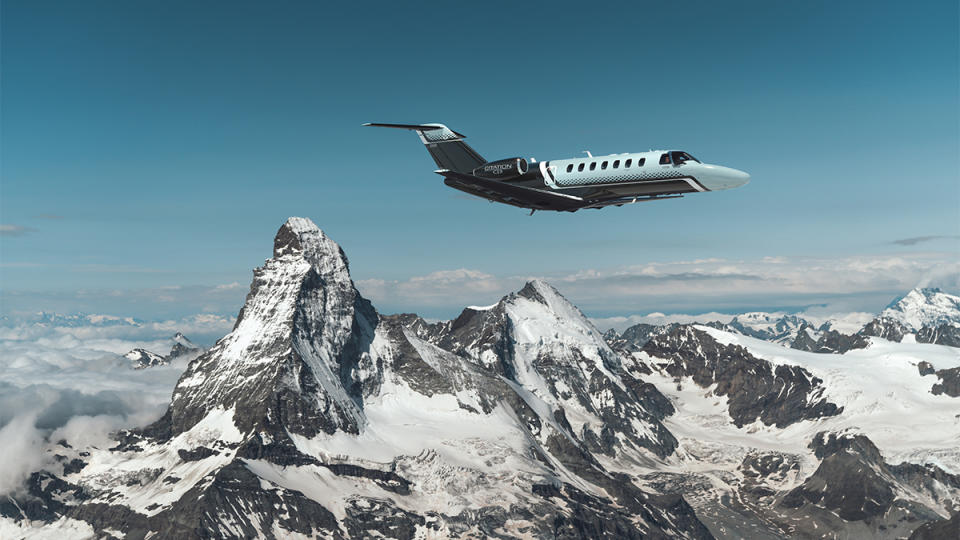
While it was no surprise that Textron Aviation would sequence through one of its most successful models for next-gen treatment, the Citation CJ3 Gen2 update still rocks, making it our pick for best of the super-midsize fleet. Inside, the revised CJ3 looks and feels like a bigger jet than its predecessor, with an interior that its engineers are justifiably proud of—from the articulating seats to the use of eco-friendly materials throughout. On the flight deck, the updated Garmin G3000, coupled with the new GDL 60 data link, transforms the pilot’s suite into a connected cockpit. The jet has a max cruise of 416 knots true airspeed, a max range of 2,040 nautical miles, and a landing distance of 2,770 feet. $10.99 million
Turboprop: Piper M700 Fury
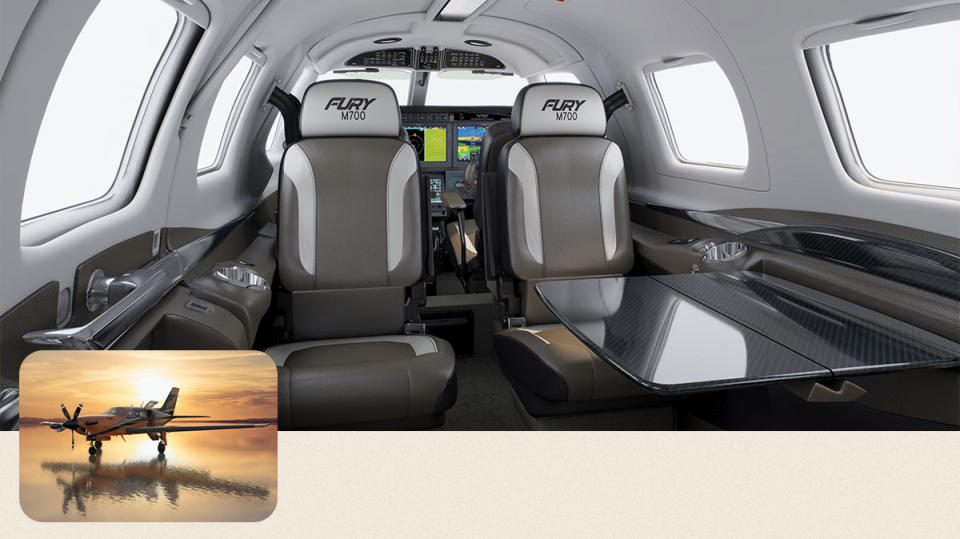
Piper has pumped its new flagship turboprop up a notch in power, giving the M700 the added range and climb rate—and just enough speed—that it needs to really compete in the category. The Pratt & Whitney PT6A-52 moves the Fury to 700 shaft hp, clicking up to a top speed (at 28,000 feet) of 301 knots true airspeed. Two vastly improved stats: The climb rate jumps to 3,432 feet per minute, while takeoff distance has been dialed back to 1,994 feet. That means the M700 Fury closes the gap with its faster competitors—the Epic E1000 GX and the Daher TBM 960—for up to a million bucks less, making it perfect for a couple or young family of four. From $4.1 million
Large Cabin: Dassault 6x
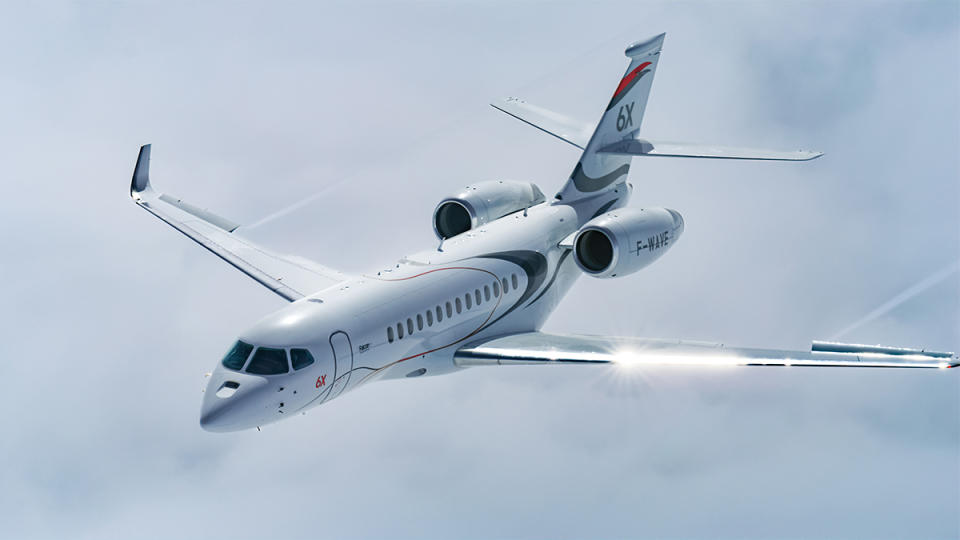
Dassault recently delivered its first long-range 6X, completing a circle that began after the French aerospace firm cancelled its four-year-old 5X program in 2017 without delivering any aircraft. It stretched the 5X’s fuselage by 20 feet to get the 6X, creating its debut wide-body configuration, which has a wider floor and taller cabin than its competitors. Despite the extra girth, the 6X’s stats are impressive: 5,500-nautical-mile range (delivering nonstop flights from Los Angeles to Geneva or São Paulo to London), 16-passenger capacity, and maximum speed of Mach 0.9. The customizable cabin, divided into three zones, has 30 extra-large windows, a full galley, and features such as a low-altitude pressurization system and circadian-rhythm lights to mitigate jet lag. Fly-by-wire controls and an advanced situational-awareness system called Falcon Eye are the cockpit differentiators. Plus, the 6X has paved the way for an even larger wide-body, the ultra-long-range 10X, scheduled for delivery in 2027. $53 million
Enhanced Flight Deck: Cirrus SR Series G7
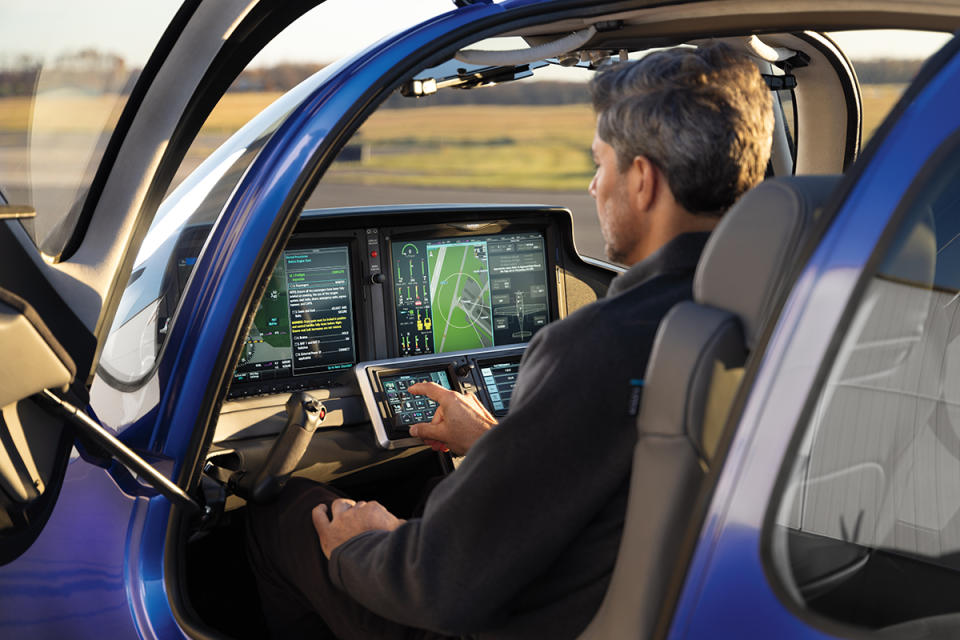
From the outside, the three new Cirrus SR G7s look the same as the G6 line, albeit with striking new paint schemes. But the flight deck holds the big reveal, which is the company’s strategy to fully align its piston series (from the SR20 on up) to its SF50 Vision Jet by offering a remarkably similar piloting experience, with an intuitive interface that simplifies the learning curve. The idea is that, when owners are ready to trade up to the Vision Jet, they’ll be prepared. The new avionics are the brains behind a host of piston-specific tools that pilots will use to ease workload, navigate on the ground and in the air, and enhance comfort along with safety. With context-driven taxi displays, automatic tank switching, and flap-overspeed protection, the Cirrus SR G7 operates more like a jet—and thanks to new overhead appointments and thoughtfully updated panels, lighting, USB-C power ports, and dedicated storage throughout, even the passengers will feel the difference. Prices range from $634,900 for the SR20 model to $969,900 for the SR22 Turbo model.
Helicopter: Leonardo AW09

This single-turbine helicopter is moving through flight tests, with projected certification in 2025. It has been a long wait since the initial development by Marenco Swisshelicopter began in 2009. The project was on and off until 2020, when Leonardo acquired Marenco (rebranded as the Kopter Group) and relaunched it. The delay proved fortuitous: Leonardo went back to the drawing board on many details, including the Safran Arriel 2K engine, making the AW09 a compelling alternative to its twin-engine competitors. The chameleonlike interior, for instance, can be configured for multiple missions, including executive transport. It features a flat floor, large windows, seats for up to eight passengers, low vibration levels, and superior air-conditioning. The Garmin G3000H flight deck provides enhanced situational awareness, with the pilot able to push the helicopter to 140 knots, and its range is 432 nautical miles. From about $4.2 million
Light Jet: Embrarer Phenom 100EX
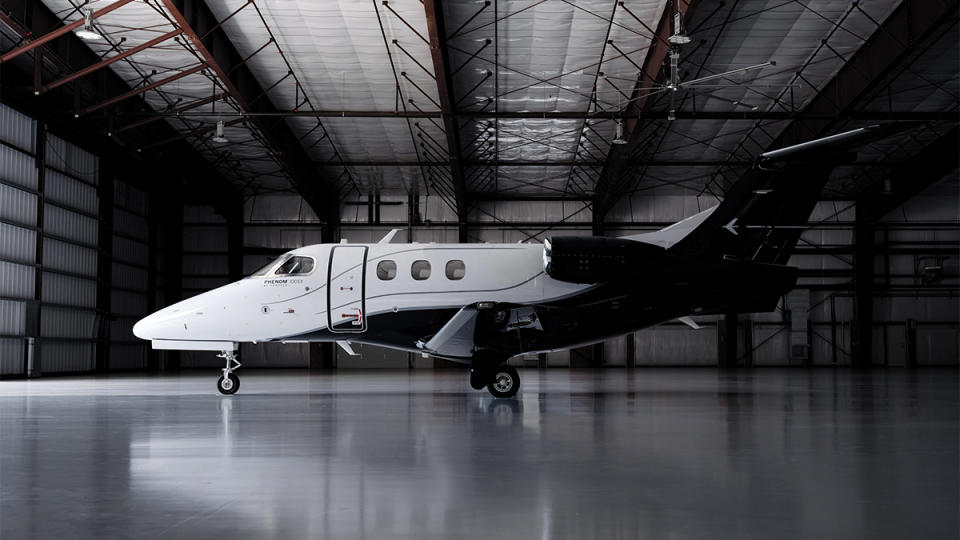
Embraer leans into the big E with its evolution of the Phenom 100EX. Choose your word: Efficiency, environment, experience—they all play a part to make it the biggest-feeling light jet on the market, which is a particularly crowded segment. Up front, the optional Runway Overrun Awareness and Alerting System that enhances stabilized approaches adds an extra layer of protection during a critical phase of flight, while the Flight Stream 510 allows the pilot to connect portable electronic devices to the aircraft avionics, thus reducing workload. In the cabin, Embraer’s design team has revised every element—opening up the space, upgrading the seats, increasing workspace by 30 percent by repositioning tables, and using new combinations of leather, Ultraleather, and veneer to dress up the interior. Stats remain best in class: a top speed of Mach 0.7, a 1,178-nautical-mile range, and a takeoff distance of 3,190 feet. $5.5 million
Jet Card: Sentient SJ25+
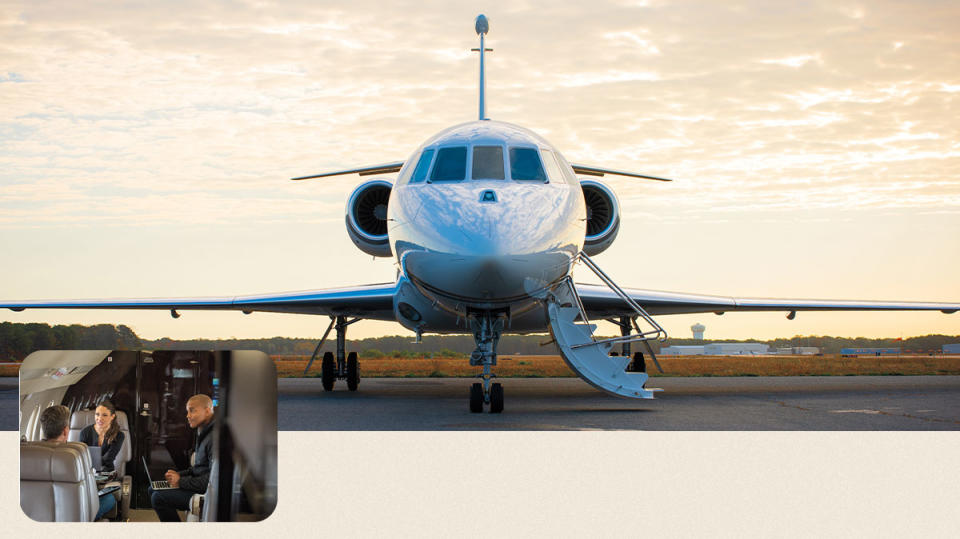
If there’s a gold standard for jet cards, Sentient, which launched the industry’s first in 1999, can claim the title. Despite the onslaught of competitors, its 25-hour card has remained at the top of the pack even as it celebrates its 25th anniversary. The differentiators: Sentient’s new app allows clients to quote prices and book flights in under 60 seconds via text, its preferred aircraft fleet is top-tier, and the card is backed by a multitiered safety structure for its clients, including an independent safety advisory board. Or just consider the numbers over the past 25 years: more than 1 million passengers flown to over 2,500 destinations; 6,700 active card owners; and revenue growth of 549 percent. Not to mention the company’s expanding partnerships with luxury hotels and events, which offer 2024 perks valued at $225,000, and its sustainability program that offsets emissions 300 percent from each flight with no cost to clients (to date, Sentient has offset 1.34 million metric tons of carbon). The 25-hour SJ25 Jet Card’s base price is $174,375; the SJ25+ Card starts at $224,625.
Electric Aircraft: Surf Air Mobility
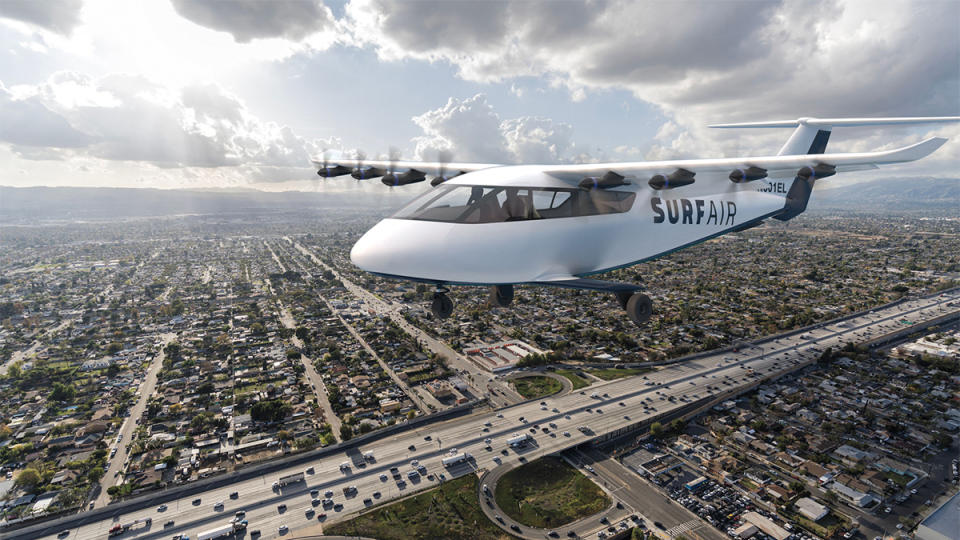
Surf Air Mobility is taking a multipronged approach to electrifying its regional fleet, with a program to retrofit existing Cessna Grand Caravans with its EP1 propulsion systems (both hybrid-electric and full electric) currently in development with AeroTEC, MagniX, and Textron. It will soon take delivery of 20 new Grand Caravans—which will also be converted—as the first installment of its order for 100 aircraft, while upgrading the rest of its fleet; Surf has also secured preferred delivery positions for 90 electric short takeoff and landing (eSTOL) commuter planes from Electra Aero. The plan is to lead the fast-approaching regional-air-mobility revolution, which McKinsey forecasts to be a $115 billion market by 2035. Surf’s recent acquisition of Southern Airways Express makes it the country’s largest commuter airline, as measured by the number of scheduled departures. In 2022, it carried 450,000 passengers to 48 cities. The stratospheric jump in short-hop flights, Surf predicts, will be driven by increasingly congested highways and high oil prices, offset by electric planes’ lower operating costs and access to smaller airfields. For Surf, the electric revolution isn’t imminent—it’s already here.
Sustainable Solution: Piasecki PA-890
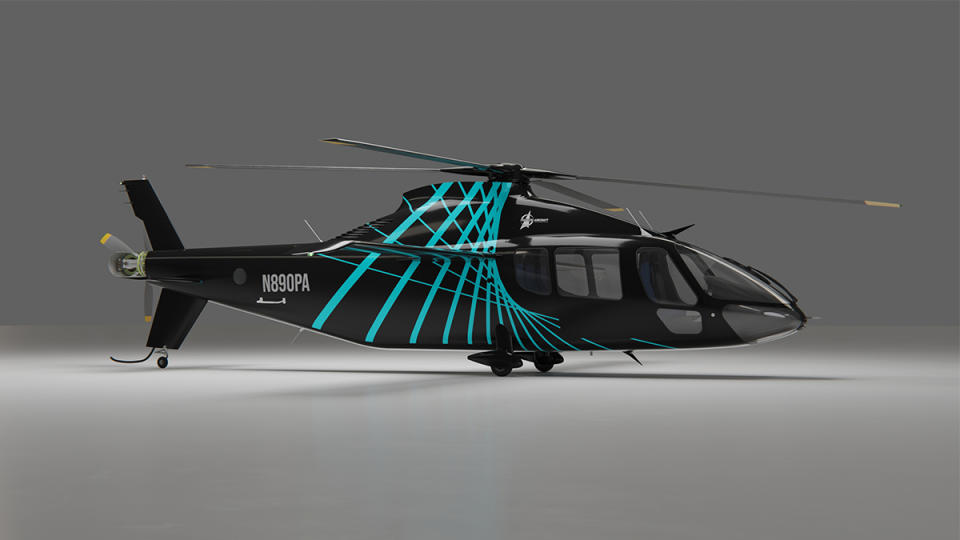
Piasecki’s PA-890 slow-rotor wing compound helicopter may not come with the catchiest name, but when a full-scale prototype begins test flights in 2028, it could be one of the most sustainable multi-mission aircraft on the planet. Buoyed by a $37 million U.S. Air Force development grant, the whirlybird-with-wings will be powered by a hydrogen fuel cell now being developed by partner ZeroAvia, giving it a respectable 200-mile range, and will have the capacity to carry a pilot and seven passengers, since one of its missions will be executive transport. Piasecki claims the PA-890 will reduce operating costs by 50 percent compared to current turbine helicopters—a bonus for owners. But what really excites us are the quieter operations and zero emissions, which make this stealth-looking aircraft a potential game changer for intracity and regional travel. Pricing not yet announced
Cabin Connectivity: SmartSky LITE ATG
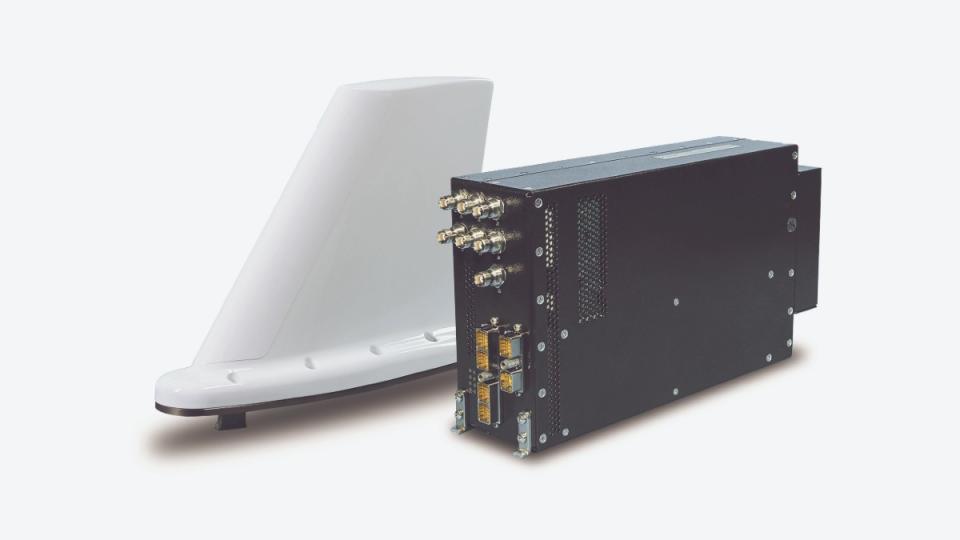
The battle for supremacy within the air-to-ground (ATG) space is hotly contested, and SmartSky was the first mover when it launched its nationwide 5G internet solution in July 2022.
Then, competitor Gogo had trouble bringing its 5G network online in 2023, leaving SmartSky to push forward with its unique services. With installations notched into the Beechcraft King Air 350, HondaJet, Cessna Citation Latitude, and most recently Citation CJ4 aircraft, along with many others, SmartSky differentiates with its ability to transmit above the ground noise.
It streams data symmetrically, enabling Zoom calls, live streaming, and gaming. Its 60 MHz 5G/LTE creates more available spectrum, meaning fewer disconnects, and the system provides enough oomph to deliver weather and diagnostics data support to crew even as passengers use multiple devices. With its Flagship system already integrated into many business jets, plus a SmartSky LITE ATG technology across a wide range of general-aviation platforms, the first off the line has taken a galloping lead for the best in cabin connectivity. Shipsets start at $59,999, plus installation and monthly data plans.


